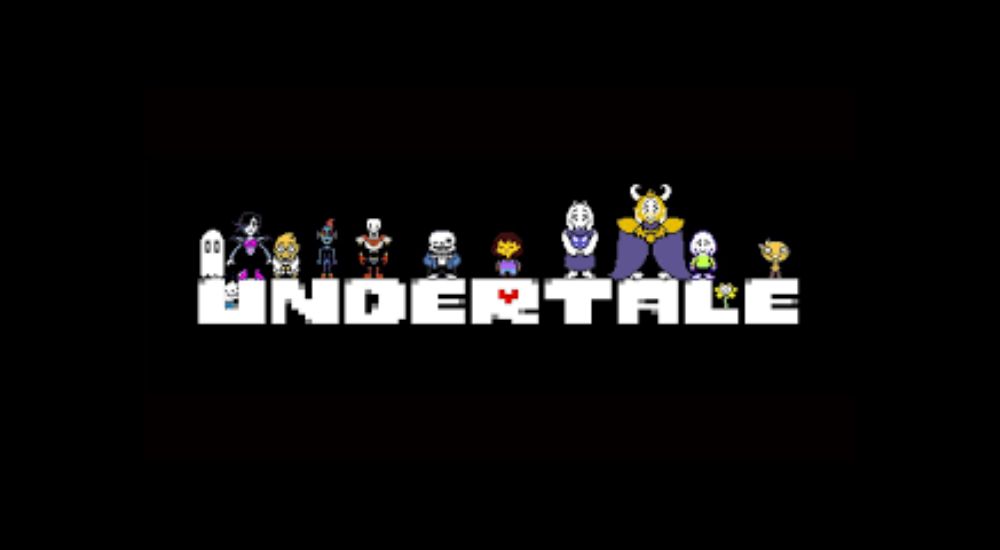Just 16 years ago, Steve Jobs unveiled the iPhone. We didn’t know back then, but it was a truly revolutionary moment for our species. Years later, these devices are everywhere you see: we use them daily for communication, entertainment (like watching Netflix series and playing mobile games), and file storage (especially for pictures and funny cat videos).
Lately, mobile gaming has been on the rise, accounting for more than half of the total gaming revenue across the world. In the United States alone, they have generated over $40 billion in revenue during 2022, and current trends are very promising, generating a lot of interest in mobile game development. But you might ask yourself: “How do I get started?”
Don’t worry, because in this article we will take a thorough look at what you need to get started with iPhone game development, and then we’ll show you how to create an iPhone game from start to finish, explaining each step in detail.
What do I need to create an iPhone game?
Financial resources
One of the biggest hurdles when it comes to iPhone game development is money, as it is the basis for everything. You will likely have to buy licenses for your game engine and specialized software, pay your employees (unless you plan on developing alone), and hire/outsource parts of your game, such as art and voice lines.
In addition to money, it’s important to have a lot of time on your hands, especially if you have an ambitious project, and you’re working as a solo developer. Even the simplest games can take some weeks to be fully developed, tested, and launched, with the time scale shifting to months with bigger iPhone games.

Development and asset creation software
Even though it’s possible to create fully-fledged games without these tools, honestly, why would you do that? Here are some tools developers use all the time to create iPhone games:
- A game engine, such as Unity, Unreal Engine, or Phaser. Make sure to use their latest stable build, as the newest ones often come bundled with annoying bugs;
- XCode or another IDE (Integrated Development Environment);
- A 3D modeling software, such as Blender (free all-in-one solution). Paid options include Maya and ZBrush;
- Software to create 2D graphics, such as Adobe Photoshop, Krita, GIMP, or Aseprite;
- A way to create audio effects, voice lines, and compelling soundtracks, such as Audacity and Ableton Live;
- The iOS SDK is a must-have if you’re using a Mac device.
High-performance computers
Using a powerful computer to develop your iPhone game is extremely important. They are extremely useful for emulating an iPhone, which you can use to test your game without using an actual iPhone for that. They can also be handy to test your game in a wide variety of situations, like limit testing, and, as modeling can be a resource hog when dealing with millions of polygons, 3D game artists will make great use of their power.

How to create an iPhone game in 5 steps
1. Pre-conception: drafting the Game Design Document (GDD)
One of the first things to do before creating a game is market research. If you want to have a successful game in your hands, understanding your target audience and the types of games they are likely to enjoy is the best first step you can take. Conducting thorough market research can also provide insights into the playing field, letting you identify gaps in your selected niche, and help you determine the latest trends in the gaming industry.
Furthermore, you can’t create a game without first envisioning it, so the next thing you will have to do is juggle many ideas until you find the one that feels right and has the potential to bewitch your target audience. You might be tempted to build something original, but remember that you don’t need to reinvent the wheel for your game to be successful. Sometimes, taking a successful game concept and putting your twists into it is enough to make a potentially world-renowned game.
For example, Toby Fox, developer of Undertale, one of the top-rated games on Steam, has cited Moon and Earthbound as major inspiration sources behind his creation. It even incorporates some mechanics from other game genres, such as Touhou Project (bullet hell), and many bosses reference other cult classics. Needless to say, it worked extremely well.

Whatever path you end up taking, there are still more things to define, such as the game engine you (or your team) will use, the game’s business model, whether you will look for extra funding, its lore, worldbuilding, core gameplay loop, challenges/objectives for the player to take on, art style, and much more.
All in all, everything you want to add to your game should be clearly defined in the Game Design Document – the GDD. Make sure to write everything down to the smallest details as the GDD will serve as the backbone for your entire project. One of the coolest things about it is that it’s a living document, which means it can (and will) evolve as you work on your iPhone game, so keeping it up to date is paramount to ensure no time and resources are wasted.
2. Development: it’s time to get your hands dirty with logic and art
Some say that art and logic are like oil and water, but in game development, this could not be further from the truth.
Once you have a concise and thorough plan for your game, it’s time to start its development. In this step, you will have to create everything players will interact with while playing your game, including (but not limited to) the game logic, models, icons, interfaces, audio effects, voice lines, environments, and the soundtrack.
There are two things you have to keep in mind when it comes to the visuals: creating all the graphics and assets is the most time-consuming step, and they are extremely important for players – around 75% of gamers say that visuals do impact their likelihood of buying a game – so put a lot of effort into creating a jaw-dropping visual experience for your players.
The good news is that games don’t have to be hyperrealistic to be aesthetically pleasing. Sometimes, it’s just a matter of choosing a captivating art style, creating visually stunning graphics to go with it, and keeping everything cohesive.

As far as coding goes, iPhone games run on Swift or Objective-C, but you can use whatever game engine with proper support. While Unity, one of the best-known game engines out there, runs on C#, it’s possible to call iPhone native functions using special C# scripts, which developers can access through special plugins.
While we’re at it, don’t forget to implement some iPhone special functions into your game. Activity indicators, well-timed vibrations, and full-screen mode are all tools you can use to further enhance your game.
3. Quality Assurance (QA) testing: ensure your game works as envisioned
While development is ongoing, it is important to QA test it and ensure everything works as per the GDD. In smaller studios, everyone might play a role in QA testing, but it’s commonplace for developers to either hire dedicated professionals or outsource it to third-party testers.
You can think of QA testers as the technical experts who will work with small prototypes and pre-alpha builds, checking them for bugs, crashes, exploits, and a variety of other issues. For example, they can test for performance issues (sometimes pushing the client and server to their limits), game stability, narrative flow, compatibility with many iPhone versions, blind gameplay, interface usability, localization issues, game balance, and much more, making them a welcome addition for development studios of all skill levels.
Whenever they find something not working as expected, QA testers will write highly detailed logs – including steps to reproduce the said error – so that developers can pinpoint and fix it right away, potentially saving tons of financial resources.

If you’re feeling extra confident about your game (or you’re trying to polish your gem even further to ensure a fantastic launch), you can even conduct a beta test for your iPhone game. This is a great way to check for compatibility issues with older iPhones, collect performance metrics, and gather more information regarding the players’ behavior – if the team finds they are leaving early, then what can be done to keep them engaged for longer?
By doing this, you can fix many problems in advance and increase the likelihood of your game becoming an overwhelming success on the App Store.
4. Implement monetization methods
Even though some games are not created with money in mind, they are products like any other, and therefore being compensated for all the hard work is something almost every game studio seeks.
As far as monetization goes, most iPhone games are free-to-play, generating revenue through a combination of in-app purchases (IAPs) and small ads that can pop up under certain conditions. It’s paramount to find the right amount of ads per hour, as shoving them into your player’s face will be detrimental to their user experience. On the other hand, show too few ads, and the game might never be financially sustainable.
A small percentage of games go the other way, becoming premium apps instead. Even though their download count is generally much lower than free-to-play games, a good premium experience is definitely worth paying for. Stardew Valley is one of the most captivating premium games out there and has amassed millions of downloads so far.
All in all, it’s true: there is no one-size-fits-all solution to monetization. You will need to conduct your research and decide which methods make the most sense for your game.

5. Launch your game and offer post-launch support to your players
As the launch draws closer, developers, designers, artists, and testers are all looking to further refine the game to ensure bug reports and issues are kept to a minimum. Despite their best efforts, there is always something that manages to go unnoticed, but there is no problem with that – as developers can always deploy post-launch patches to help fix the game’s issues.
Can you imagine what would be of Cyberpunk 2077 if CDPR couldn’t deploy patches to fix the hundreds of glaring issues it had at launch?
Speaking of post-launch support, it refers to the ongoing maintenance, updates, and customer support the team provides to a game after its release, being an essential part of the game development process. In addition to what we mentioned before, it can include responding to player inquiries and feedback, addressing their complaints, and providing assistance with in-game issues and purchases.

Embark on Your iOS Game Development Journey
Creating an iPhone game is an exciting endeavor that offers countless opportunities in the gaming industry. iOS game development, whether for iPhone or iPad, allows you to bring your game projects to life and reach millions of iOS users. To make an iPhone game, you’ll need to learn how to code using programming languages like Swift or Objective-C, and familiarize yourself with developer tools like Xcode.
Game development in iOS typically involves building 2D games, but the industry has seen a recent surge in 3D game development for iOS devices. To create an iOS game, you’ll also need to consider game physics, game performance, and ensure that your game runs on multiple iOS versions and iPhone models free of bugs.
Once your game is ready, you can submit it to the App Store, making it available to iOS users worldwide. With the right resources and a creative vision, you can learn how to make iOS games that captivate players and leave a mark in the world of mobile gaming.
What about hiring professional game developers?
As we have shown, game development is a long and arduous process. Even creating simple games can be tough, as you will have to go through the ideation, development, testing, monetization, and launch journey no matter what.
Do you have an idea in mind, but don’t want to deal with all the technicalities of game development? Well, there’s an easier option: by hiring a fully-fledged team of qualified professionals, you can skip all the nitty-gritty aspects of game development and have your creation delivered to you as soon as we’re finished!
At Main Leaf, we specialize in creating fantastic games on demand, having done so since 2010. Our roster of 70+ talented professionals has hundreds of collective years of experience in the industry, working on your game from start to finish and taking it to the next level.
Don’t just take our word for it: request a game quote today and see for yourself. We will get back to you within 24 hours!

